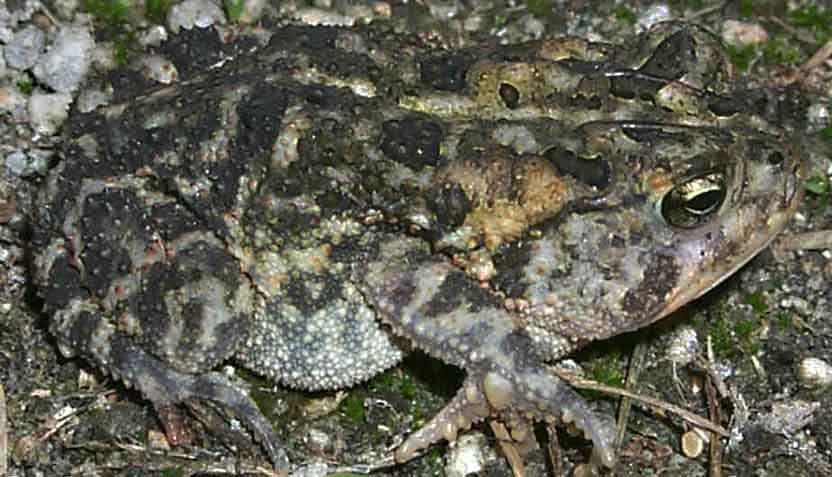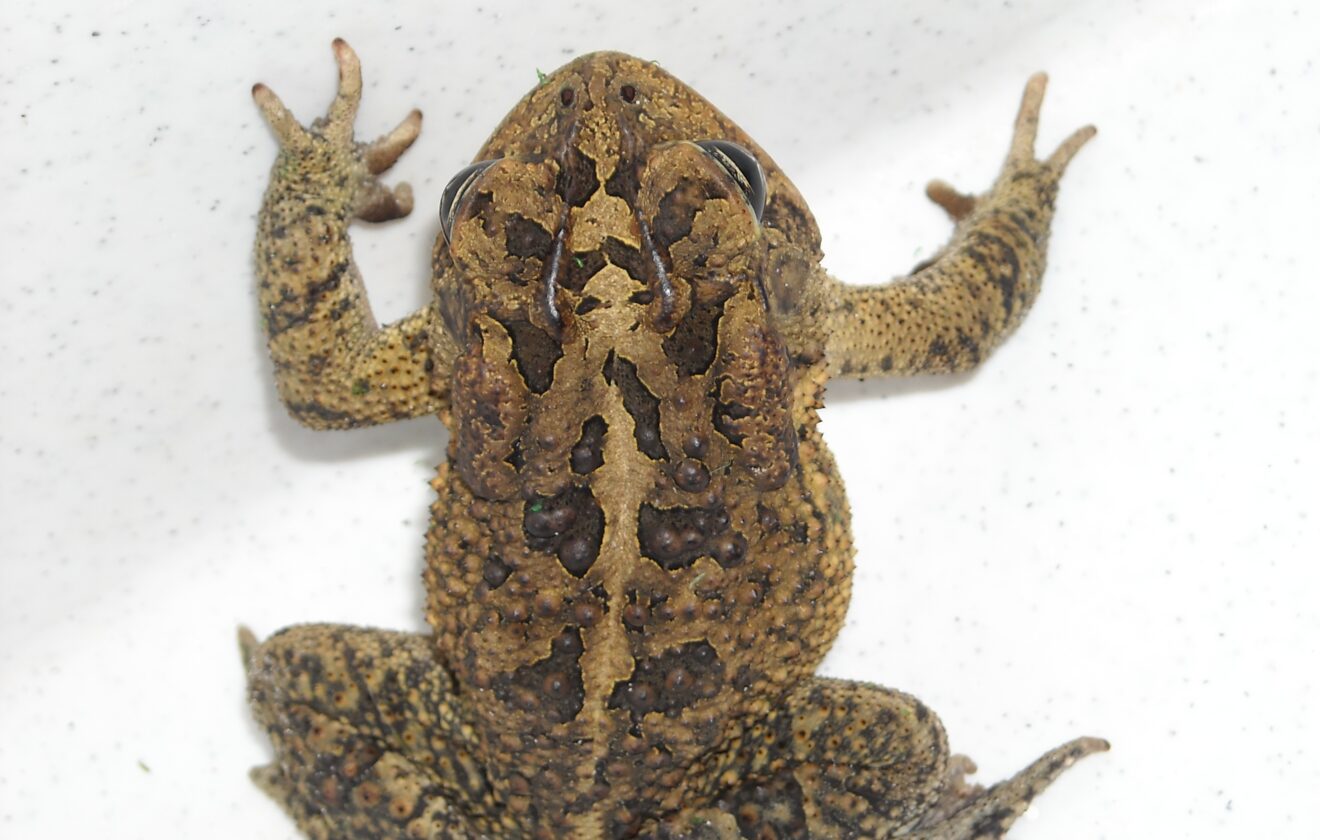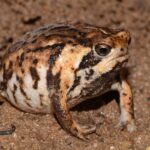- Anaxyrus terrestris: Exploring the Secret World of the Southern Toad
- Taxonomy and Classification: Placing the Southern Toad in Its Family Tree
- Natural Habitat: A Life Hidden in Leafy Stillness
- Physical Characteristics: Mastery of Camouflage and Adaptation
- Behavior and Life Cycle: A Cycle Tied Closely to Seasons and Rainfall
- The Southern Toad's Ecological Role: A Vital Species in Natural Harmony
- Threats and Conservation Status: Navigating a Changing Environment
- Cultural and Scientific Significance: Reflections of Environmental Health and Cultural Connections
- Conclusion: Celebrating the Southern Toad and Ensuring Its Future
Anaxyrus terrestris: Exploring the Secret World of the Southern Toad#
Beneath the dusky twilight of a southern woodland trail, hidden among tangles of leaf litter and mossy logs, you might glimpse the subtle movement of a sturdy amphibian—camouflaged perfectly into its surroundings. You’re witnessing a silent guardian of these Southern ecosystems—the humble yet fascinating Southern Toad, scientifically known as Anaxyrus terrestris. This remarkable species, often overlooked, is a vital inhabitant of its region, contributing significantly to the health and diversity of its habitat. While not as glamorous as the brightly colored tropical tree frogs or as universally recognized as the iconic bullfrog, the Southern Toad holds deep ecological and cultural significance, quietly enriching the biodiversity of many southeastern landscapes. Comfortably dwelling within its niche, this amphibian species amazes even seasoned naturalists with its resilience, behaviors, and adaptability.
Taxonomy and Classification: Placing the Southern Toad in Its Family Tree#
The Southern Toad belongs to the family Bufonidae, a diverse and globally widespread family known colloquially as “true toads.” Within this family, species share common traits—characteristic dry, warty skin, parotoid glands, and a life closely tied to terrestrial habitats, despite their aquatic breeding rituals.
The genus Anaxyrus, previously classified under the broader genus Bufo, comprises numerous North American toads, each exhibiting unique ecological adaptations. As of recent taxonomic revisions, the Southern Toad carries the name Anaxyrus terrestris, indicating its terrestrial nature and preference for dry land habitats.
This species closely resembles and is often sympatric with similar Eastern North American toads such as Fowler’s Toad (Anaxyrus fowleri) and the American Toad (Anaxyrus americanus). Careful morphological observations are necessary for clear identification, underscoring the nuanced relationships found within this remarkable amphibian lineage.
Natural Habitat: A Life Hidden in Leafy Stillness#
Exploring the southeastern habitats—from Virginia down the coastal plains to parts of Louisiana and throughout Florida—the Southern Toad has firmly established itself as an integral part of regional biodiversity. Preferring sandy soils and coastal pine woodlands, this species thrives in open habitats, suburban gardens, grasslands, and disturbed areas where loose earth provides ample spaces for burrowing.
Beyond merely tolerating human disturbances, Southern Toads often flourish in urban and suburban settings, an indication of their flexibility and adaptability. On warm and humid evenings, you might find them positioned under porch lights or near soaked lawns, waiting eagerly for their insect prey. Yet, despite this adaptability, Anaxyrus terrestris thrives best in habitats offering adequate loose soil, abundant leaf litter, moisture, and suitable breeding ponds devoid of pollutants or invasive predators.
An Affinity for Moisture and Shelter#
Providing moisture without permanent saturation, the Southern Toad’s preferred habitats allow them to efficiently regulate hydration—a critical aspect of amphibian existence. Leaf litter and lush ground vegetation offer organic moisture-retentive cover, fostering microclimates suitable for their delicate skin. They dig shallow burrows or occupy abandoned mammal dens, where they escape extreme temperatures and potential predators throughout the daytime hours.
The seasonal and ephemeral wetlands scattered throughout the southeastern landscapes serve as critical breeding grounds. Ponds, swamps, and temporary pools formed from spring rains offer relatively predator-free environments, notably conducive to the successful maturation of eggs and tadpoles. A closer look underscores the delicate balance and interdependence of moisture, vegetation, and suitable climatic conditions that allow this species’ survival and reproductive success.
Physical Characteristics: Mastery of Camouflage and Adaptation#
The Southern Toad is robustly built, with adults usually ranging from 4 to 8 centimeters in length. Their coloration skillfully mirrors the earthy tones—shades of brown, gray, reddish-brown, or tan accented by variable dark blotches, rendering them particularly elusive against leaf litter and soil.
Characteristically dry and warty skin makes them readily distinguishable from frogs. Large parotoid glands, visible behind their eyes, secrete toxins as a vital defense mechanism, deterring predators with a bitter and mildly toxic secretion. Their ventral surfaces are typically lighter, exhibiting hues of whitish-gray or cream, further complementing their effective camouflage.
Adaptive features abound in this terrestrial species, complete with muscular hind limbs well-suited for efficient burrowing rather than prolonged aquatic life or strong leaping. Their sturdy body structure and shorter limbs enhance their sub-surface maneuverability, allowing them quick refuge within moist, loose earth.
Behavior and Life Cycle: A Cycle Tied Closely to Seasons and Rainfall#
Nocturnal Hunters of the Southern Night#
Under cover of darkness, Southern Toads exhibit their highly specialized predatory behaviors. A keen eye reveals them patiently stationed beneath porch lights or street lamps, adeptly exploiting the buzzing swarms of insects attracted by artificial illumination. Beetles, ants, roaches, and spiders all fall prey to their stealthy quick-tongued hunting approach.
While primarily insectivorous, their diet demonstrates adaptability, occasionally including smaller amphibians or opportunistically feeding upon abundant prey sources. The Southern Toad employs both visual signals and keen sensory perception to discern movement in their prey, swiftly extending a sticky tongue to capture meals with impeccable precision.
Seasonal Rituals: Courtship by Crescent Moonlight#
With the onset of warm spring rains—often from March to June—the landscape transforms into a lively chorus ringing across ephemeral ponds and marshes. Male Southern Toads join this rich symphony, their melodic trills and whistles serenading receptive females. Often described as a musical whistle or an enchanting cricket-like call, males settle within shallow water, inflated vocal sacs carrying their courtship notes far into humid nights.
Amplexus, the mating embrace wherein the male clasps tightly onto the female’s back, precedes the remarkable egg-laying event. Females lay long, gelatinous strings containing thousands of eggs, carefully entwined within subaquatic vegetation. Here, the eggs develop safely into aquatic tadpoles, eventually growing limbs and adjusting physiology to adapt to terrestrial life, culminating in young toadlets emerging onto dry earth after six to eight weeks.
The Southern Toad’s Ecological Role: A Vital Species in Natural Harmony#
Amphibians often act as ecological indicators, mirroring the health of their environments. Through their terrestrial and aquatic life phases, Southern Toads bridge both ecosystems, effectively transferring nutrients, regulating insect populations, and providing nourishment to carefully balanced food webs involving snakes, birds, and other carnivores.
They facilitate natural pest control, consuming thousands of insects that might otherwise damage forests or crops, while their tadpole stage notably assists in algae growth regulation within ponds. Thus, the hidden and often overlooked Southern Toad profoundly impacts ecosystem stability and resilience.
Threats and Conservation Status: Navigating a Changing Environment#
Currently, the Southern Toad enjoys a status of “Least Concern” according to the International Union for Conservation of Nature (IUCN). However, despite their adaptability, they remain vulnerable to habitat degradation, environmental contaminants, invasive species, and climate unpredictability.
Pesticide use, urbanization, deforestation, and introduced predators like ornamental fish severely strain localized populations. In regions witnessing rapid development and habitat loss, amphibian populations can decline swiftly without our awareness—underscoring the importance of continued ecological monitoring and habitat conservation.
Cultural and Scientific Significance: Reflections of Environmental Health and Cultural Connections#
Within human culture, Southern Toads have inhabited folklore, children’s stories, and regional mythologies, symbolizing resilience, transformation, and ecological balance. Scientifically, they contribute significantly as sentinel species, providing invaluable information on environmental health, contaminants, disease outbreaks, and changing climatic conditions.
Researchers studying amphibian decline or toxicology utilize Southern Toads as indicators of ecosystem health and biological diversity. Thus, they hold considerable ecological, scientific, and cultural value, reminding us of the interconnectedness between humans and the natural environment we share and steward.
Conclusion: Celebrating the Southern Toad and Ensuring Its Future#
The Southern Toad—Anaxyrus terrestris—embodies the incredible adaptability and subtle beauty hidden within the biodiversity of southeastern habitats. As humans increasingly recognize our intricate ecological relationships, conserving and appreciating such species becomes essential. By safeguarding the habitats and landscapes where these fascinating amphibians reside, we protect not only their future but ours. Let us continue exploring, understanding, and preserving the ecosystems these intriguing creatures call home, securing biodiversity for generations yet to come.















